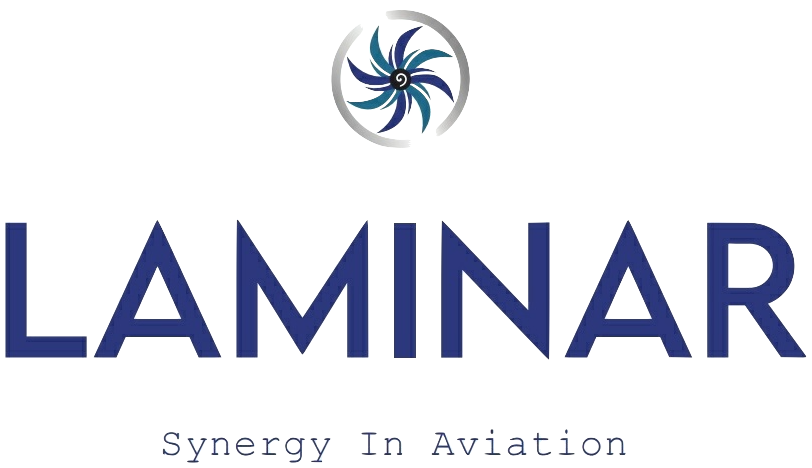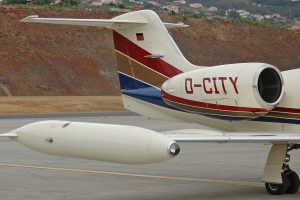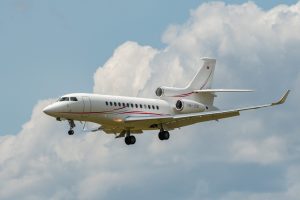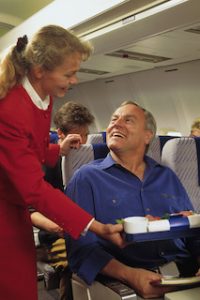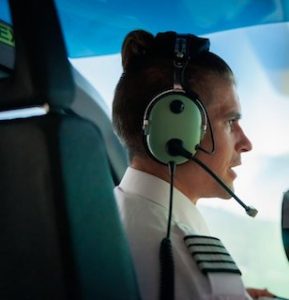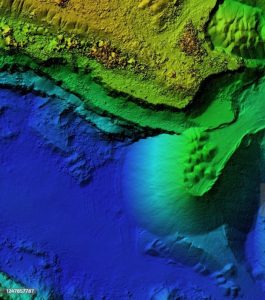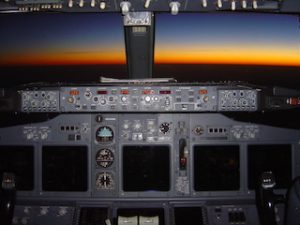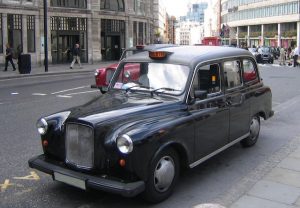Airline Pilot Standard Course Syllabus
 Becoming a proficient airline pilot requires extensive training and education. The Airline Pilot Standard (APS) Course is designed to equip aspiring pilots with the knowledge, skills, and competencies necessary to operate commercial aircraft safely and efficiently. This in-depth guide explores the comprehensive syllabus of the APS Course, highlighting the key components and subjects that are integral to pilot training.
Becoming a proficient airline pilot requires extensive training and education. The Airline Pilot Standard (APS) Course is designed to equip aspiring pilots with the knowledge, skills, and competencies necessary to operate commercial aircraft safely and efficiently. This in-depth guide explores the comprehensive syllabus of the APS Course, highlighting the key components and subjects that are integral to pilot training.
Airline pilot standard course
The APS Course is a rigorous training program that covers a wide range of topics essential for aspiring airline pilots. It encompasses both theoretical knowledge and practical skills, ensuring that pilots are well-prepared to handle the complexities of modern aviation. The course is structured to meet international aviation standards and regulatory requirements, providing a solid foundation for a successful career in aviation.
Ground school: Theoretical knowledge
Ground school is a crucial component of the APS Course, providing the theoretical knowledge necessary for understanding aircraft operations, navigation, meteorology, and more. The ground school syllabus is divided into several key subjects:
1) Air law
Understanding aviation regulations and laws is fundamental for any pilot. This subject covers:
-
- International aviation law: Overview of international regulations governing air travel.
- National aviation regulations: Specific regulations for the country in which the pilot is training.
- Air traffic control (ATC) procedures: Communication and coordination with ATC.
- Flight rules: Visual Flight Rules (VFR) and Instrument Flight Rules (IFR).
2) Aircraft general knowledge
Pilots must have a thorough understanding of the aircraft they will be operating. This subject includes:
-
- Airframe and systems: Structure and components of the aircraft, including landing gear, flight controls, and hydraulics.
- Engines: Operation and maintenance of jet and turboprop engines.
- Electrical systems: Understanding of the aircraft’s electrical systems and their management.
- Flight instruments: Function and operation of primary and secondary flight instruments.
3) Flight performance and planning
Effective flight planning and understanding aircraft performance are critical for safe operations. Topics covered include:
-
- Weight and balance: Calculating and managing the aircraft’s weight and balance.
- Performance calculations: Takeoff and landing performance, climb and cruise performance.
- Flight planning: Route selection, fuel planning, and alternate airports.
- Navigation: Use of charts, navigation aids, and GPS systems.
4) Human performance and limitations
Recognizing the human factors that affect pilot performance is essential. This subject covers:
-
- Physiology: Effects of altitude, fatigue, and stress on the human body.
- Psychology: Decision-making, situational awareness, and stress management.
- Crew Resource Management (CRM): Effective communication and teamwork in the cockpit.
5) Meteorology
Weather conditions play a significant role in flight operations. This subject includes:
-
- Weather patterns: Understanding weather systems and patterns.
- Weather forecasting: Interpretation of weather forecasts and reports.
- Weather phenomena: Effects of turbulence, icing, thunderstorms, and other adverse weather conditions on flight.
- Meteorological instruments: Use of weather radar and other tools for weather assessment.
6) Navigation
Accurate navigation is vital for safe flight operations. This subject covers:
-
- Principles of navigation: Basic navigation principles and techniques.
- Radio navigation: Use of radio aids for navigation, such as VOR, NDB, and DME.
- Area Navigation (RNAV): Advanced navigation techniques using GPS and other technologies.
- Flight Management Systems (FMS): Integration of navigation and performance management systems.
7) Operational procedures
This subject focuses on the operational aspects of flying, including:
-
- Standard Operating Procedures (SOPs): Established procedures for normal and emergency operations.
- Operational planning: Pre-flight preparation and in-flight decision-making.
- Emergency procedures: Handling of in-flight emergencies, such as engine failures, fire, and decompression.
- Abnormal situations: Management of non-critical but abnormal situations, like minor system failures.
8) Principles of flight
Understanding the principles of flight is crucial for effective aircraft operation. Topics include:
-
- Aerodynamics: Lift, drag, thrust, and weight principles.
- Stability and control: Factors affecting the stability and control of the aircraft.
- Performance characteristics: How different factors influence aircraft performance.
- Flight manoeuvres: Techniques for performing various flight manoeuvres safely.
Flight training: Practical skills
Flight training is where theoretical knowledge is put into practice. It includes various stages, from basic flying skills to advanced operational techniques.
1) Basic flight training
This stage focuses on the fundamental skills required for piloting an aircraft:
-
- Aircraft familiarisation: Introduction to the training aircraft, including cockpit layout and basic controls.
- Basic manoeuvres: Practicing basic flight maneuvers, such as climbs, descents, turns, and straight-and-level flight.
- Takeoff and landing: Techniques for safe takeoffs and landings, including crosswind operations.
- Traffic patterns: Understanding and flying standard traffic patterns around airports.
2) Instrument flight training
Instrument flight training is essential for operating in all weather conditions:
-
- Instrument scanning: Developing the ability to interpret and manage multiple flight instruments simultaneously.
- IFR procedures: Procedures for flying under Instrument Flight Rules, including departure, en route, and arrival procedures.
- Navigation by instruments: Use of navigation aids and instruments for precise navigation.
- Instrument approaches: Techniques for conducting various types of instrument approaches, including ILS, VOR, and RNAV approaches.
3) Advanced flight maneuvers
This stage focuses on more complex maneuvers and techniques:
-
- Steep turns: Performing steep turns with precision and control.
- Emergency maneuvers: Handling simulated in-flight emergencies, such as engine failures and system malfunctions.
- Stall and spin recovery: Recognising and recovering from aerodynamic stalls and spins.
- Cross-country flights: Planning and executing long-distance flights, including navigation and fuel management.
4) Multi-engine training
For pilots transitioning to multi-engine aircraft, this stage is crucial:
-
- Engine management: Techniques for managing multiple engines, including synchronisation and failure procedures.
- Multi-engine aerodynamics: Understanding the aerodynamic principles specific to multi-engine aircraft.
- Asymmetric flight: Handling of aircraft with one engine inoperative, including performance calculations and control techniques.
- Emergency procedures: Specific procedures for dealing with multi-engine emergencies, such as engine fires and failures.
5) Crew Resource Management (CRM)
Effective teamwork and communication are vital in multi-crew environments:
-
- Teamwork skills: Developing effective teamwork skills within the cockpit.
- Communication: Techniques for clear and concise communication between crew members.
- Decision-making: Collaborative decision-making processes in high-pressure situations.
- Conflict resolution: Strategies for resolving conflicts and maintaining a positive working environment.
6) Line-Oriented Flight Training (LOFT)
LOFT provides realistic flight scenarios to practice operational skills:
-
- Realistic scenarios: Simulating real-world flight operations, including routine and emergency situations.
- Decision-making: Practicing decision-making in realistic scenarios.
- Coordination: Enhancing coordination between pilots and other crew members.
- Performance evaluation: Assessing performance and identifying areas for improvement.
Simulator training
Simulator training is an integral part of the APS Course, providing a safe and controlled environment for practicing complex scenarios:
1) Flight simulators
Modern flight simulators replicate the cockpit environment and flight characteristics of actual aircraft:
-
- High-fidelity simulators: Use of high-fidelity simulators to practice flight operations.
- Scenario-based training: Simulating various flight scenarios, including normal, abnormal, and emergency situations.
- Procedural training: Practicing standard operating procedures and emergency checklists.
- System failures: Handling system failures and malfunctions in a simulated environment.
2) Full-flight simulators
Full-flight simulators provide the most realistic training experience:
-
- Motion and visual systems: Simulators equipped with motion and visual systems to replicate the sensations of flight.
- Advanced scenarios: Practicing advanced flight scenarios, including complex approaches and departures.
- Emergency procedures: Simulating in-flight emergencies to develop quick and effective responses.
- Pilot evaluation: Conducting pilot evaluations to assess proficiency and readiness.
Safety and emergency procedures
Safety is paramount in aviation, and the APS Course emphasises thorough training in safety and emergency procedures:
1) Pre-flight safety checks
Conducting comprehensive pre-flight checks to ensure the aircraft is safe for flight:
-
- Aircraft inspection: Detailed inspection of the aircraft’s exterior and interior.
- Systems check: Verifying the functionality of critical systems, including engines, avionics, and hydraulics.
- Fuel management: Ensuring proper fuel levels and management for the planned flight.
- Weight and balance: Confirming the aircraft’s weight and balance are within safe limits.
2) In-flight emergency procedures
Developing skills to handle emergencies during flight:
-
- Engine failures: Procedures for dealing with engine failures during different phases of flight.
- Fire and smoke: Responding to in-flight fires and smoke.
- Electrical failures: Managing electrical system failures and related issues.
- Loss of control: Recovering from unusual attitudes and loss of control situations.
3) Post-flight procedures
Ensuring safety and readiness for the next flight:
-
- Post-flight inspection: Conducting a thorough inspection of the aircraft after landing.
- Debriefing: Reviewing the flight with the crew to identify any issues and areas for improvement.
- Documentation: Completing necessary documentation and reports.
- Maintenance coordination: Communicating with maintenance personnel to address any identified issues.
Theory and practice
The Airline Pilot Standard (APS) course is a comprehensive training program designed to equip aspiring pilots with the knowledge, skills, and competencies necessary for a successful career in aviation. The syllabus covers a wide range of subjects, from theoretical knowledge in ground school to practical skills in flight training and simulator sessions. By providing a solid foundation in areas such as air law, aircraft general knowledge, flight performance and planning, human performance, meteorology, navigation, and operational procedures, the APS Course ensures that pilots are well-prepared to handle the complexities of modern aviation.
In addition to technical skills, the course emphasizes the importance of crew resource management, teamwork, and effective communication, which are crucial for safe and efficient flight operations. By completing the APS Course, pilots gain the confidence and competence needed to navigate the skies safely and efficiently, making it an essential step in their journey to becoming professional airline pilots.
